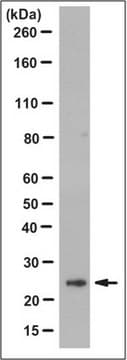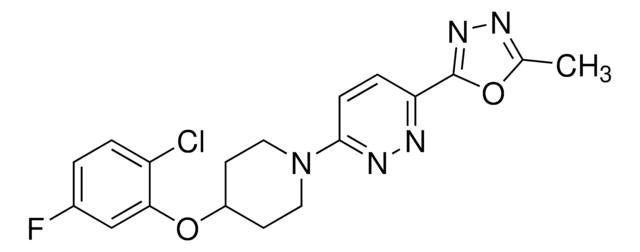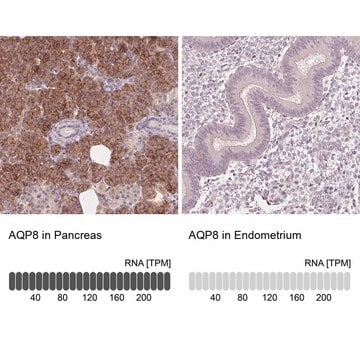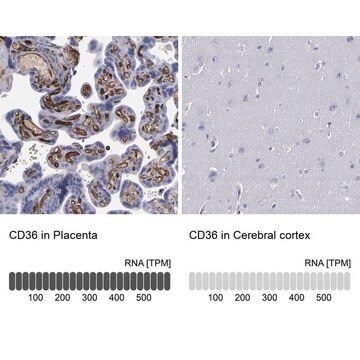MABC959
Anti-CD1d Antibody, clone WTH-1
clone WTH-1, from mouse
Sinonimo/i:
Antigen-presenting glycoprotein CD1d, CD1d
About This Item
Prodotti consigliati
Origine biologica
mouse
Livello qualitativo
Forma dell’anticorpo
purified antibody
Tipo di anticorpo
primary antibodies
Clone
WTH-1, monoclonal
Reattività contro le specie
mouse, rat
tecniche
activity assay: suitable
flow cytometry: suitable
immunohistochemistry: suitable
immunoprecipitation (IP): suitable
western blot: suitable
Isotipo
IgG2aκ
N° accesso NCBI
N° accesso UniProt
Condizioni di spedizione
dry ice
modifica post-traduzionali bersaglio
unmodified
Informazioni sul gene
mouse ... Cd1D(110290701)
rat ... Cd1D(104874051)
Categorie correlate
Descrizione generale
Applicazioni
Flow Cytometry Analysis: A representative lot detected the surface expression of CD1d on isolated thymocytes from rats and mice, as well as on Raji transfectants expressing murine or rat CD1d (Monzon-Casanova, E., et al. (2010). PLoS One. 5(9): e13089).
Immunoprecipitation Analysis: A representative lot immunoprecipitated CD1d from isolated mouse and rat thymocytes, as well as exogenously expressed murine and rat CD1d from transfected Raji cells (Monzon-Casanova, E., et al. (2010). PLoS One. 5(9): e13089).
Immunohistochemistry Analysis: A representative lot detected CD1d immunoreactivity using frozen tissue sections from rats and mice (Monzon-Casanova, E., et al. (2010). PLoS One. 5(9): e13089).
Activity Assay: A representative lot inhibited CD1d antigen presentation cells from activating type I NK cells using total splenocytes from rats and mice. Clone WTH-1 also blocked mCD1d1-transduced LBB cells from activating co-cultured VIII24.1 murine type II NKT cells, while WTH-1 enhanced XV19.2 murine type II NKT cell activation by mCD1d1-transduced Raji cells (Monzon-Casanova, E., et al. (2010). PLoS One. 5(9): e13089).
Application Note: Clone WTH-1 (Cat. No. MABC959) and WTH-2 (Cat. No. MABC960) gave inferior IHC staining in mouse than in rat organs, especially in non-lymphatic tissues. In addition, clone WTH-2 produced a much lower signal in mice than mAb WTH-1. To detect low-grade expression, mouse non-lymphatic organs should be stained using a highly sensitive tyramide amplification procedure with inclusion of C57BL/6 CD1d2/2 mouse organs as negative controls (Monzon-Casanova, E., et al. (2010). PLoS One. 5(9): e13089).
Qualità
Flow Cytometry Analysis: 1.0 µg of this antibody detected CD1d in rat thymocytes and splenocytes.
Descrizione del bersaglio
Stato fisico
Altre note
Non trovi il prodotto giusto?
Prova il nostro Motore di ricerca dei prodotti.
Codice della classe di stoccaggio
12 - Non Combustible Liquids
Classe di pericolosità dell'acqua (WGK)
WGK 2
Punto d’infiammabilità (°F)
Not applicable
Punto d’infiammabilità (°C)
Not applicable
Certificati d'analisi (COA)
Cerca il Certificati d'analisi (COA) digitando il numero di lotto/batch corrispondente. I numeri di lotto o di batch sono stampati sull'etichetta dei prodotti dopo la parola ‘Lotto’ o ‘Batch’.
Possiedi già questo prodotto?
I documenti relativi ai prodotti acquistati recentemente sono disponibili nell’Archivio dei documenti.
Il team dei nostri ricercatori vanta grande esperienza in tutte le aree della ricerca quali Life Science, scienza dei materiali, sintesi chimica, cromatografia, discipline analitiche, ecc..
Contatta l'Assistenza Tecnica.








